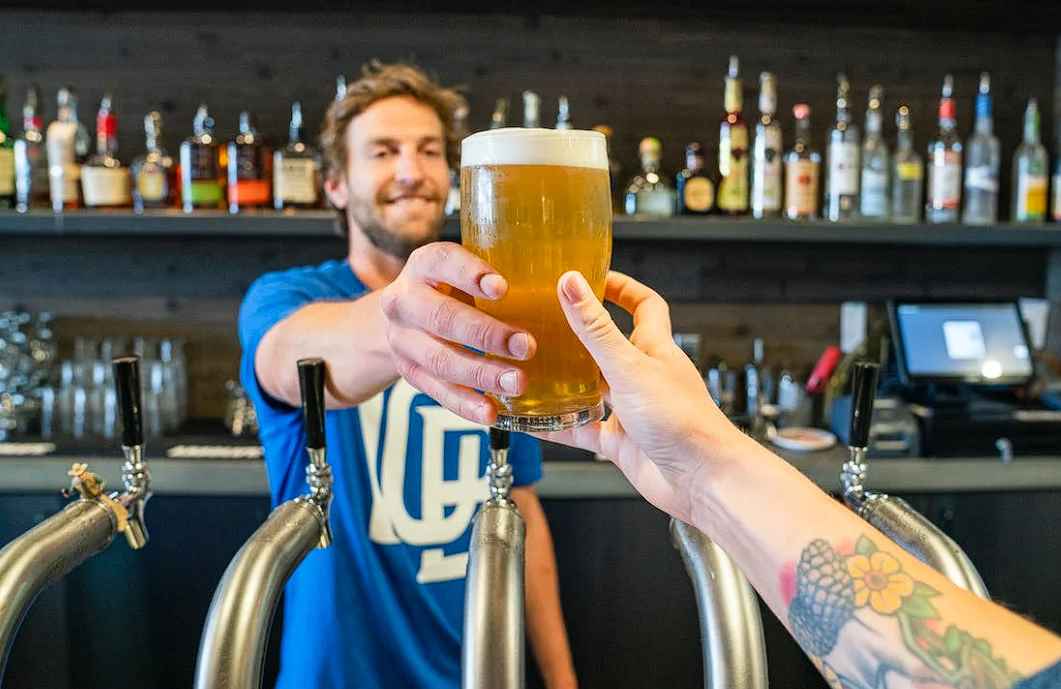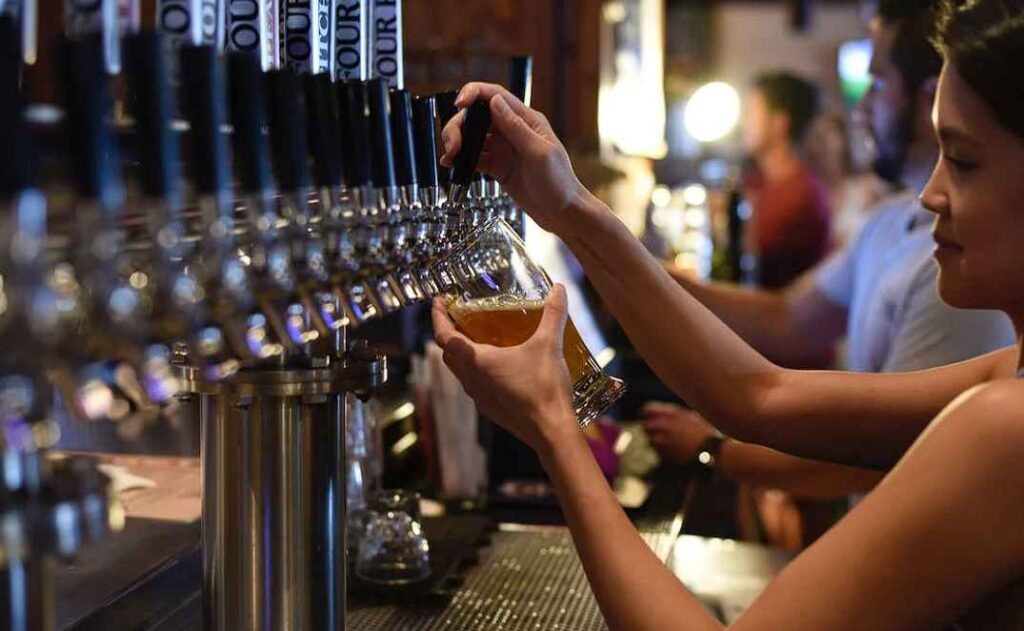One of the most traditional and widely used alcoholic beverages worldwide is beer. A wide variety of types cater to different tastes and preferences. Each beer type offers a unique blend of flavours, aromas, and characteristics influenced by ingredients like malt, hops, yeast, and brewing techniques.
From crisp and refreshing lagers to rich, malty stouts and complex ales, there's a beer style for every palate.
Understanding the different types of beers can enhance your drinking experience and help you choose the perfect brew for any occasion. Read this blog to learn more about the fascinating world of beer types and what makes each special!
Let’s get straight to the point
This blog comprehensively overviews popular beer types, detailing flavour profiles, origins, and ideal food pairings. Beer is categorised into main types, such as ales and lagers, each with unique fermentation methods influencing taste.
Ales, like IPAs, dark ales, and pale ales, tend to have bold, complex flavours with higher alcohol content, while lagers, such as pilsners, light beers, and amber lagers, are generally crisper and milder. Specialty beers, including cream ales, Belgian-style lagers, wheat beers, and barley wines, offer unique taste experiences for diverse palates.
Key tips for choosing craft beers include checking for allergens, considering alcohol content, and starting with session beers if you're new to craft beer. This guide highlights how understanding beer varieties can enhance the drinking experience, helping you choose the perfect beer to match any meal or occasion.
1. Light Beer

- Flavour Profile: Light beers are easy to drink, have a mild hop presence, and have a low body, making them a popular choice for pairing with various foods.
- Best Pairings: Perfect with light dishes and snacks, making it a versatile option.
2. Pilsner
- Description: Originating in 19th-century Europe, pilsners are a type of light lager known for their clear, golden appearance and pronounced hop flavour.
- Taste Profile: Crisp and clean, with a noticeable bitterness that complements many dishes.
- Food Pairings: Best paired with lightly fried foods like calamari, tempura, and crispy cutlets.
3. Red And Amber Lagers
- Characteristics: These darker lagers use toasted barley, giving them a rich caramel or toffee flavour.
- Tasting Notes: Rich and flavourful with a hint of sweetness, these lagers provide a unique tasting experience.
- Ideal Food Pairings: It works well with heartier dishes, enhancing flavours with toasted and caramelised notes.
4. Cream Ale
- Profile: Light and smooth, cream ales are clear, not bitter, and have a mild flavour.
- Comparison: It can be similar to pale lagers but with slight differences in texture and aroma.
- Food Pairings: Pairs well with various dishes, offering a balanced drinking experience.
5. India Pale Ale (IPA)
- Description: IPAs, known for their bitter taste, originated in 19th-century England. Hops were added to preserve the beer during long voyages.
- Flavours: Bold, fruity, and often intense, IPAs are a favourite among craft beer enthusiasts.
- Best Served With: Pairs wonderfully with rich, fatty, or spicy foods that can handle its strong flavours.
6. Dark Ale
- Types: English and Belgian dark ales each have unique tastes. English-style dark ales are sweeter and maltier, while Belgian-style ales are drier and can have a fruity hint.
- Tasting Notes: Common flavours include caramel, raisin, and sometimes spice.
- Food Pairings: Perfect for pairing with cosy comfort foods or sweet desserts.
7. Pale Ale
- Varieties: Pale ales come in English, American, and Belgian styles, each with distinct flavour profiles.
- English Pale Ale: Malty and earthy with moderate bitterness.
- American Pale Ale: More bitter and hoppy with a citrusy finish.
- Belgian Pale Ale: Slightly sweeter and malty, with a peppery note.
- Best With: Complements a wide range of dishes, making it a versatile meal choice.
8. Belgian-Style Lager
- Characteristics: Belgium is known for a wide range of beer styles, from tart red and brown ales to rich abbey-style brews.
- Flavour Notes: Varied, from sour to malty and often complex.
- Food Pairings: Pairs with cheeses, seafood, and traditional Belgian fare.
9. Brown Ale
- Description: English-style brown ale, also known as nut brown ale, is known for its slightly sweet, nutty flavour.
- Best Served With: It goes well with hearty dishes, spicy ribs, or desserts, as its sweetness complements rich flavours.
10. Barley Wine
- Flavour Profile: Typically high in alcohol content, barley wine has a strong, robust flavour with hints of caramel, toffee, or dried fruits.
- Food Pairings: Ideal for sipping with desserts or flavourful meats due to its sweet and intense taste.
11. Wheat Beer
- Ingredients: Made using wheat, these beers are often light, smooth, and sometimes fruity, with hints of banana or bubblegum.
- Variations: Colours can vary from nearly clear to dark brown, offering options to match various tastes.
- Best Pairings: Pairs well with seafood, salads, or light desserts.
Tips For Choosing The Right Craft Beer

With so many varieties available, choosing the right beer can be overwhelming. Here are some helpful guidelines for selecting your next craft beer.
Watch Out For Allergens
- Ingredients to Check: Barley and wheat are common ingredients in beer and may cause allergies in gluten-intolerant individuals. Some beers, like Milk Stouts, may also contain lactose.
- Tip: Always read the ingredients list, especially if you have dietary restrictions.
Consider Alcohol Content
- Alcohol Levels: Craft beers can range widely in alcohol content, with some reaching 14% ABV or higher. Light lagers, by contrast, usually have lower ABV.
- Start with Session Beers: If you're new to craft beer or have a lower tolerance, opt for session or non-alcoholic beers. These beers are designed for easy drinking, especially in warm weather.
Conclusion
In this guide, we've explored the fascinating types of beers, from the foundational ales and lagers to hybrid and unique varieties. Here's a quick summary of the differences:
- Ales: Made with top-fermenting yeast, featuring complex flavours and often higher alcohol content.
- Lagers: Made with bottom-fermenting yeast, typically light, crisp, and refreshing.
- Hybrid Beers: Combining elements of ales and lagers for unique flavours.
- Specialty Types: Including IPAs, dark ales, pilsners, and more—each bringing distinctive taste profiles that pair well with various foods.
Each beer type offers a unique drinking experience, providing endless options for novice and seasoned enthusiasts. Whether you're looking for a light lager to quench your thirst or a robust IPA to accompany a spicy meal, there's a craft beer to suit every palate and occasion.
Frequently Asked Questions
Including all the major beer styles and all of their sub-styles (see below), there are believed to be over 100 different beer styles in the world.
Lager is the most popular beer style in the world. Budweiser, Coors Light, Corona and Michelob Ultra are all lagers.
The healthiest are stouts and porters, and higher hoppy beers, such as DIPAs and Imperial IPAs, Trappist beers, and spontaneous fermented beers, such as Lambics and Gose. Trappist-style beer is probably the most famous of the Belgian beers.
Moderate alcohol use for healthy adults generally means up to one drink a day for women and up to two drinks a day for men. Examples of one drink include: Beer: 12 fluid ounces (355 millilitres) Wine: 5 fluid ounces (148 millilitres)
Red wine, in moderation, has long been thought of as heart healthy. The alcohol and certain substances in red wine called antioxidants may help prevent coronary artery disease, the condition that leads to heart attacks.

